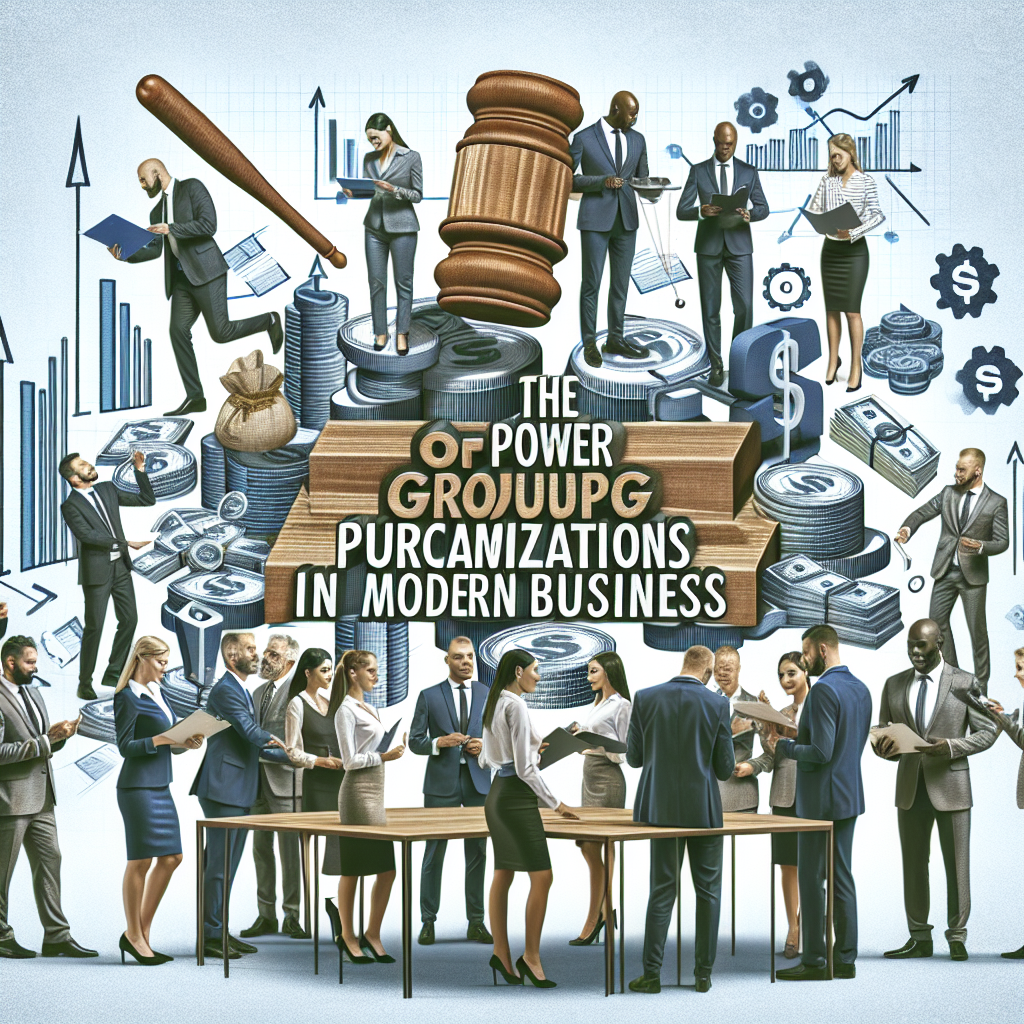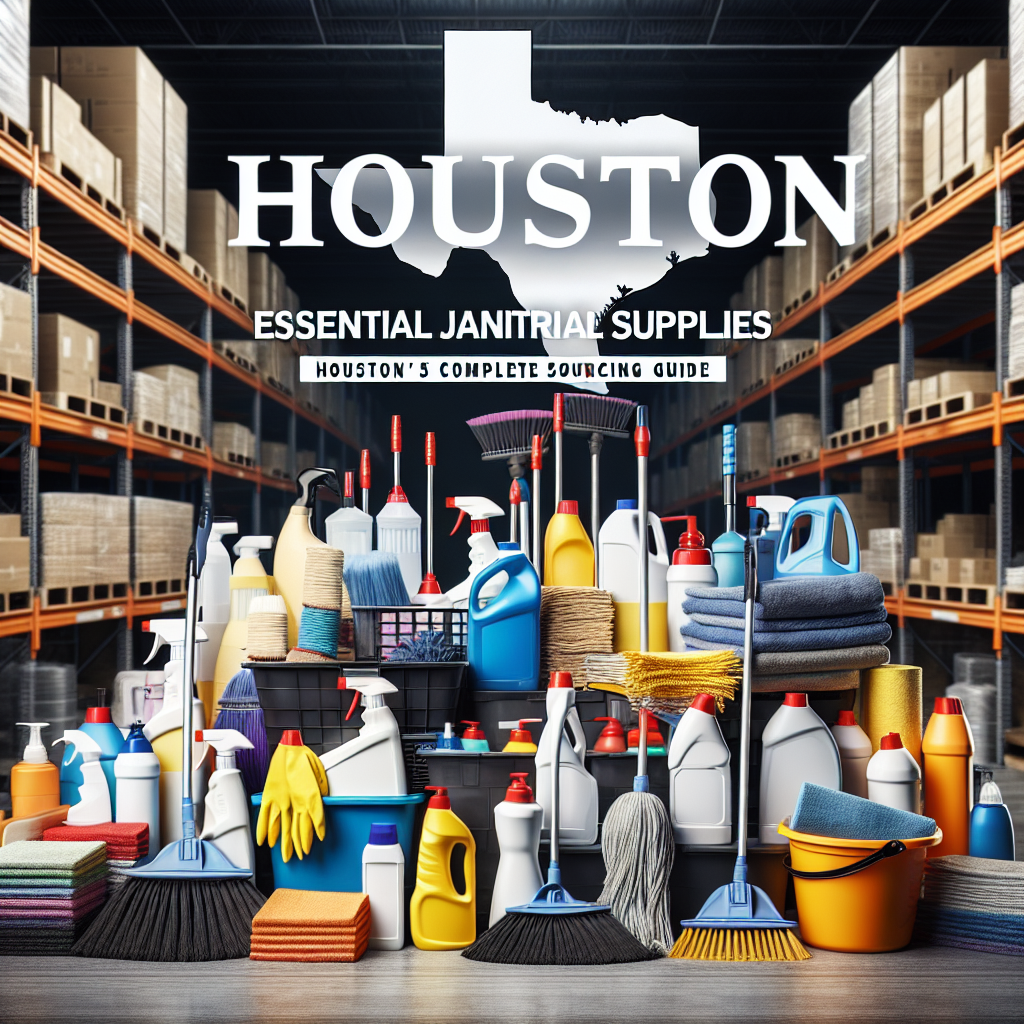Introduction
Group Purchasing Organizations (GPOs) play a critical role in modern procurement strategies. They are entities that leverage collective buying power to negotiate better pricing and terms for their members. By pooling resources, GPOs provide access to significant cost savings on a wide range of products and services.
This article will explore the various aspects of group purchasing organization services. You will gain insights into their models, benefits, specific savings by product category, and additional services that GPOs offer beyond procurement support. Moreover, we will discuss top trends in supplier innovation which could further enhance the value derived from these organizations. For any inquiries or further information, feel free to contact us.
Understanding Group Purchasing Organizations (GPOs)
Group Purchasing Organizations (GPOs) are entities that leverage collective buying power to negotiate discounts and favorable terms on behalf of their members. This collaborative approach not only enables organizations to access products and services at significantly reduced prices, making procurement more efficient, but also leverages drastic cost reduction through collective spend.
Key Functions of GPOs:
- Purchasing Power: By combining the purchasing needs of multiple members, GPOs negotiate better pricing than individual organizations could achieve alone.
- Cost Savings: Members benefit from exclusive contracts that provide best-in-class pricing and substantial savings, often translating into lower operational costs.
Significance in Specific Sectors:
In the healthcare sector, GPOs play a critical role. Hospitals and clinics utilize GPO services to reduce expenses for medical supplies, equipment, and services. The ability to maintain quality while decreasing costs is essential in an industry where margins can be tight. For instance, essential PPE for airborne precautions in healthcare can be procured at lower costs through GPOs.
GPOs also extend their influence into various industries beyond healthcare, including education, manufacturing, and hospitality, showcasing their versatility and importance across sectors. They also play a significant role in promoting [diversity, equity, and inclusion in the workplace](https://hubzonedepot.com/uncategorized/what-is-dei-understanding-diversity-equity-and-inclusion-in-the-workplace), which is an essential aspect of modern business practices.
Types of GPO Models
Group Purchasing Organizations (GPOs) can be categorized into two primary models: horizontal and vertical.
Horizontal Models
These GPOs serve a wide range of industries, pooling purchasing power across diverse sectors. They are commonly found in healthcare, education, and non-profits. The broad application allows members from various fields to benefit from collective buying power.
Vertical Models
Focused on specific industries, vertical GPOs cater to niche markets with specialized needs. Examples include construction, manufacturing, and hospitality. These organizations often negotiate contracts tailored to the unique requirements of their members.
The choice between horizontal and vertical GPO models largely depends on your organization’s industry and specific procurement needs. Understanding these models helps organizations align their purchasing strategies with the most beneficial GPO structure. Each model presents distinct advantages based on the nature of the goods or services required.
Benefits of Joining a GPO
Joining a Group Purchasing Organization (GPO) offers significant advantages, particularly in terms of cost savings and enhanced purchasing power. Here are some key benefits:
1. Cost Savings
Members typically achieve substantial savings through collective buying power. GPOs negotiate contracts that leverage the aggregate demand of their members, resulting in lower prices across various product categories. For instance, average savings can range from 15% to 35%, depending on the type of goods.
2. Access to Exclusive Discounts
Membership often includes access to exclusive discounts unavailable to non-members. This means you can procure high-quality products at competitive rates, enhancing your organization’s procurement strategy.
3. Best-in-Class Pricing
GPOs provide members with best-in-class pricing for essential supplies such as MRO, office products, PPE, and more. This pricing is often better than what individual organizations can negotiate on their own.
4. Membership Benefits
Beyond just savings, GPO membership brings personalized support and streamlined purchasing processes. Members enjoy bulk buying power without purchase minimums, allowing for flexible ordering tailored to specific needs. Moreover, these exclusive membership benefits further enhance the overall value derived from joining a GPO.
These advantages make joining a GPO a strategic decision for organizations looking to optimize their procurement efforts while maximizing financial efficiency.
Specific Savings by Product Category with a GPO Membership
One of the primary advantages of joining a Group Purchasing Organization (GPO) is the potential for significant savings across various product categories. Here’s a detailed breakdown of average savings percentages for key categories:
-
MRO (Maintenance, Repair, and Operations):
- Average savings range from 15% to 25%.
-
Office Supplies:
- Members typically experience savings between 15% to 35%.
-
Janitorial Supplies:
- Average savings can be expected at around 15% to 30%.
-
Breakroom Supplies:
- This category often yields savings of 10% to 25%, which can significantly contribute to boosting employee morale.
-
PPE (Personal Protective Equipment):
- GPO members generally see savings in the range of 15% to 35%.
The financial impact of these savings is substantial. For organizations that focus on cost reduction, leveraging GPO membership can result in optimized budgets and improved purchasing strategies. The ability to access these discounts allows businesses not only to save money but also to allocate resources more efficiently, enhancing overall operational effectiveness. This approach aligns well with the art of frugal living, which emphasizes maximizing cost savings in daily life.
Services Offered by GPOs Beyond Procurement Support
Group Purchasing Organizations (GPOs) extend their value beyond traditional procurement support. They provide a range of services designed to enhance operational efficiency and improve purchasing strategies.
Core Services
- Procurement Support: GPOs streamline the purchasing process, allowing members to focus on their core business functions. This includes offering access to the best procurement software and outsourcing companies, which can revolutionize an organization’s procurement strategy.
- Contract Negotiation: Expert negotiators work to secure favorable contract terms, ensuring members benefit from competitive pricing.
Value-Added Services
In addition to core offerings, GPOs deliver several value-added services that further enhance the membership experience:
- Electronic Invoicing: Simplifies the billing process, reduces administrative burdens, and increases accuracy in financial transactions.
- Market Insights: Access to industry data trends helps organizations make informed purchasing decisions.
- Training and Education: Members receive resources and training on best practices in procurement and supply chain management. This could include insights from Frank Corris’s transformative journey, which emphasizes continuous learning and strategic thinking in achieving procurement success.
- Compliance Assistance: Guidance on regulatory requirements ensures that purchasing activities align with necessary standards.
These comprehensive services empower organizations to maximize their procurement capabilities while fostering a collaborative environment for continuous improvement. However, it’s important to note that procurement can face crises, and building resilience during such times is crucial. Additionally, for those looking to start their career in this field, there are several entry-level procurement jobs available that can serve as a good starting point.
Streamlining Procurement Processes with a GPO Membership
Group Purchasing Organizations (GPOs) play a crucial role in improving sourcing values and making procurement processes easier for organizations. By combining purchasing power, GPOs enable businesses to access better pricing and terms from suppliers. This collective approach not only reduces costs but also simplifies the procurement process.
Benefits of GPO Membership in Procurement
1. Bulk Buying Power
GPOs leverage the collective buying power of their members, allowing organizations to negotiate significant discounts on products and services. This synergy results in more favorable contract terms that individual companies may struggle to achieve alone.
2. Streamlined Vendor Management
GPOs often maintain a robust network of suppliers, which helps members avoid the complexities of vendor management. This simplifies the procurement landscape, enabling organizations to focus on core activities rather than getting bogged down in supplier negotiations.
3. Access to Comprehensive Data
Members benefit from data analytics provided by GPOs. These insights help organizations identify spending patterns, optimize purchases, and make informed decisions based on market trends.
Effective Sourcing Strategies
In addition to the benefits mentioned above, GPOs also employ effective sourcing strategies that can be instrumental in hiring top talent and managing supplier relationships more effectively. This is where supplier relationship management comes into play, ensuring that organizations maintain healthy relationships with their suppliers while achieving optimal procurement outcomes.
Modern Automation Challenges in Procurement
While GPOs facilitate easier procurement processes, modern automation challenges can impact their effectiveness:
- Integration Issues: Many businesses face difficulties integrating new automation technologies with existing systems. Disparate software solutions can lead to inefficiencies and errors in procurement processes.
- Data Security Concerns: As organizations adopt automated solutions, safeguarding sensitive procurement data becomes paramount. Ensuring compliance with regulations while maintaining operational efficiency presents a challenge.
- Resistance to Change: Employees may resist transitioning to automated systems due to discomfort with new technologies or fear of job displacement. This resistance can hinder the successful implementation of automation strategies.
Strategies for Mitigating Automation Challenges
- Comprehensive Training Programs: Providing thorough training for employees about new technologies can alleviate fears and improve confidence when using automated systems.
- Selecting User-Friendly Solutions: Choosing intuitive software that integrates seamlessly with existing systems minimizes disruptions during the transition phase and enhances user adoption rates.
- Regular Feedback Mechanisms: Establishing feedback loops allows organizations to gather insights from employees regarding automated processes, ensuring continuous improvement and addressing any issues promptly.
The Importance of Strategic Sourcing
Understanding the difference between strategic sourcing and category management is crucial for businesses aiming to maximize their procurement efficiency. This knowledge can further enhance their ability to navigate modern challenges effectively.
GPOs not only offer cost-saving opportunities but also vital support through streamlined procurement processes that adapt to modern challenges. With a well-planned approach to automation, including procurement optimization, organizations can overcome these hurdles and achieve greater efficiency in their purchasing activities.
The Case Study of HubZone Depot LLC: A Real-World Example of a Successful HUBZone Certified Woman-Owned Supplier Leveraging a GPO Membership to Serve Public Sector Clients Effectively
Introduction to HubZone Depot LLC
HubZone Depot LLC stands out as a Tier 1 HUBZone Certified Woman-Owned Supplier. Founded by Jessica S. Presco, this Burlington, NJ-based company focuses on providing high-quality procurement services to the public sector. Their commitment to excellence is evident through their certifications and adherence to HUBZone compliance, which enables them to access federal contract opportunities that can significantly benefit their clientele.
Overview of Services and Customer Base
HubZone Depot offers an array of products and services tailored for various sectors, particularly in the public domain. Their offerings include:
- Office supplies
- Maintenance, Repair, and Operations (MRO) products
- Janitorial supplies
- Breakroom essentials
- Personal Protective Equipment (PPE)
With a customer base exceeding 400 organizations, HubZone Depot has established itself as a reliable partner for public entities seeking efficient procurement solutions. The company’s strategic collaboration with Group Purchasing Organizations (GPOs) enhances its ability to provide exclusive discounts and best-in-class pricing, making quality products more accessible.
Tail Spend Management in Procurement
An essential aspect of HubZone Depot’s success lies in their expertise in tail spend management. This involves strategically managing the low-value spend items that often go unnoticed but collectively represent a significant portion of the total procurement budget. By optimizing these expenditures, HubZone Depot not only ensures cost efficiency but also enhances the overall procurement process.
Maximizing Supplier Performance
The company also places a strong emphasis on maximizing supplier performance. They implement rigorous practices to ensure that their suppliers meet the necessary quality and reliability standards. This dedication to maintaining high supplier performance ultimately benefits their clients by providing them with superior products and services.
Tips for Managing a One-Person Procurement Function
In addition to serving larger organizations, HubZone Depot also provides valuable insights for businesses operating with limited resources. They offer strategic solutions for managing a one-person procurement function. These tips are designed to optimize cost efficiency and streamline supplier management, making it easier for small businesses to navigate the complexities of procurement.
Building Trust Through Transparent Supplier Communication
Another key element of HubZone Depot’s operational strategy is the importance of transparent supplier communication. By fostering open lines of communication with suppliers, they build trust and drive business growth. This approach not only strengthens relationships with suppliers but also ensures that clients receive timely updates and accurate information regarding their orders.
Serving Public Sector Clients Using Public Funds
The importance of HUBZone certification cannot be overstated when it comes to serving public sector clients. This certification not only opens doors for federal contracts but also allows businesses like HubZone Depot to compete effectively in a crowded marketplace. By leveraging their GPO membership, they can offer competitive rates while ensuring compliance with federal regulations.
HUBZone compliance is crucial for maintaining eligibility for government contracts.
Challenges and Considerations When Engaging with a GPO
Engagement with Group Purchasing Organizations (GPOs) offers significant benefits but also presents notable challenges. Understanding these challenges is essential for businesses considering GPO membership.
Limited Access to Non-Contract Goods
One major drawback of using GPOs is the restricted access to non-contract goods. Members typically benefit from pre-negotiated contracts. While this can lead to cost savings, it limits procurement flexibility. Businesses may find themselves unable to source specific products that are not included in the GPO’s catalog. This limitation can hinder efforts to meet unique operational needs. However, it’s important to note that succeeding with limited resources can help businesses navigate these constraints effectively.
Revenue Transparency Issues
Transparency regarding revenue streams remains another concern. Many GPOs receive rebates or incentives based on member purchasing volumes. However, the lack of clear communication around these financial arrangements can create skepticism among members. Companies may question how much of their purchasing power translates into actual savings versus profit for the GPO.
The Impact of Automation
The evolving procurement landscape has seen an increase in automation tools utilized by GPOs. These technologies aim to streamline processes, enhance efficiency, and improve data accuracy. However, automation introduces its own set of challenges:
- Integration Complexity: Implementing automated systems often requires significant adjustments in existing procurement practices.
- Dependence on Technology: Over-reliance on automated solutions can lead to inefficiencies if the systems fail or encounter issues.
- Training Needs: Staff may require additional training to effectively leverage new technologies, which can incur costs and time delays.
To address these challenges, businesses should consider adopting a balanced approach that combines automation with traditional procurement strategies. Maintaining human oversight ensures that automated systems are functioning as intended while allowing for flexibility when unexpected situations arise.
Emerging Trends Affecting GPOs
The landscape of group purchasing is continually changing, influenced by several emerging trends:
- Increased Demand for Transparency: As businesses become more aware of revenue structures within GPOs, there is growing pressure for transparency in pricing and savings.
- Focus on Sustainability: Organizations increasingly prioritize eco-friendly products and suppliers. GPOs must adapt their offerings to include sustainable options.
- Technological Advancements: Innovations such as artificial intelligence and machine learning are enhancing data analytics capabilities within GPOs, allowing for more informed decision-making.
These trends shape the future outlook of group purchasing organizations across various sectors. Adapting to these changes will be crucial for GPOs aiming to remain relevant and effective in a competitive environment.
Organizations considering joining a GPO must weigh these challenges against potential benefits. Awareness of these factors will aid in making informed decisions while navigating the complexities of group purchasing dynamics.
For those interested in exploring career opportunities within this field, understanding procurement engineer salary trends could provide valuable insights into future job market expectations.
Conclusion: Embracing the Benefits While Being Mindful of the Challenges Associated with Using a Group Purchasing Organization (GPO) for Your Business Needs
Group Purchasing Organizations (GPOs) play a crucial role in modern procurement strategies, offering significant advantages alongside some challenges.
Summary of Benefits When Engaging with a GPO:
- Cost Savings: Access to exclusive discounts and best-in-class pricing can lead to average savings of 15-35% across various product categories.
- Streamlined Procurement: GPOs simplify the purchasing process, enabling organizations to focus on core operations.
- Enhanced Buying Power: Collective purchasing power helps small and medium-sized businesses compete effectively in the marketplace.
Being aware of potential limitations such as restricted access to non-contract goods and transparency issues is essential. Adopting a strategic approach when leveraging GPO services can maximize their benefits while addressing any challenges.
FAQs (Frequently Asked Questions)
What are Group Purchasing Organizations (GPOs)?
Group Purchasing Organizations (GPOs) are entities that leverage collective buying power to negotiate discounts and favorable pricing for their members. They play a significant role in sectors like healthcare, where procurement services can lead to substantial cost savings.
What are the different types of GPO models?
There are two primary types of GPO models: horizontal and vertical. Horizontal GPOs serve a wide range of industries by pooling purchasing power across various sectors, while vertical GPOs focus on specific industries or markets, providing tailored solutions and services.
What benefits can businesses expect from joining a GPO?
Businesses can expect significant cost savings through bulk buying power, access to exclusive discounts, and best-in-class pricing. Membership in a GPO often includes additional benefits such as procurement support and contract negotiation services.
How does GPO membership affect savings by product category?
GPO membership can lead to varying average savings percentages across different product categories. For example, members may see substantial savings in categories such as Maintenance, Repair, and Operations (MRO), office supplies, personal protective equipment (PPE), and janitorial products.
What additional services do GPOs offer beyond procurement?
In addition to procurement support, GPOs provide value-added services such as electronic invoicing and contract management. These services help streamline the procurement process and enhance overall efficiency for their members.
What challenges might organizations face when engaging with a GPO?
Organizations may encounter challenges such as limited access to non-contract goods, transparency issues regarding revenue streams, and modern automation challenges in procurement processes. It is essential for businesses to navigate these considerations while leveraging the benefits of GPO membership.





